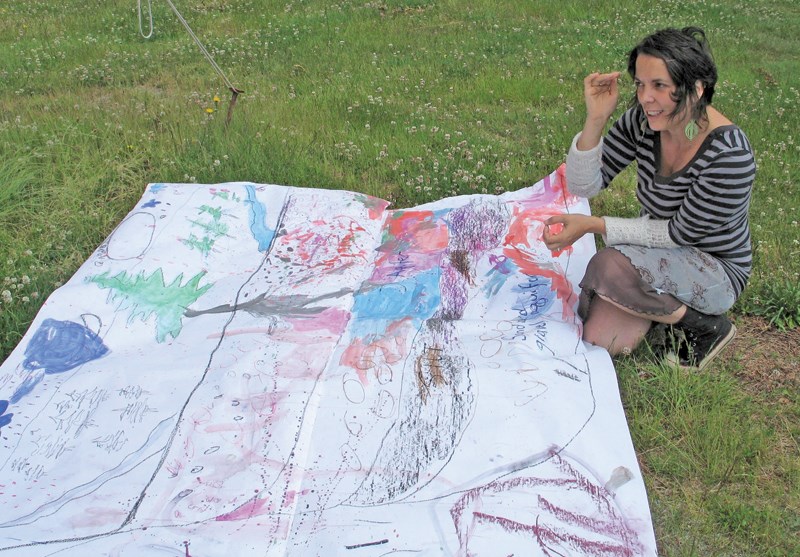The Gibsons aquifer, that source of pure water, has been on everyone’s minds over the past few weeks as residents experienced a threat to their drinking water.
The aquifer has been the subject of an interesting and prolonged project started by Deer Crossing, the art farm. Resident artist Sandy Buck has been taking a creative initiative into local schools, Langdale Elementary and Cedar Grove, talking about water to the kids and engaging them in artwork around that theme. She and the students have learned much about how aquifers form from Ginny Cullen, a hydrogeological engineer, and they have received some funding from the BC Arts Council and support from the Town of Gibsons.
Phase two of the aquifer project involves a week-long summer art workshop at the Farm on Storvold Road starting July 7, in which kids aged eight to 14 will create art from clay, paint, words or theatre — whatever they are interested in.
“It’s not summer camp,” said Buck, hastening to add that there’s nothing wrong with summer camp. “Movement and play is totally awesome, but this is a place to create.” Buck will be one of the seven instructors, all accomplished artists, who will lead the children. Chad Hershler will join in for theatre and story-telling with puppets. Steve Weave is the ears of the group as he works with sound, and Bronwen Payerle who is “a multitude of talents” will lead the group in animation.
“Eilis [Carpentier] brings words and myths alive,” Buck said. “She shapes words.” Kez Sherwood adds the element of ceramics — and she brings a level of artistry to form, notes Buck. Miyuki Shinkai, who has branched out from her glass artistry, will lead drawing and painting. Youth volunteers will act as support.
All of the artists will work with the land and environment.
“We’re using the whole five acres,” Buck points out.
The project takes place outdoors on a platform covered by a red and white striped tent. For rainy days there’s a great room, The Hub, full of props for creative play. The farm has a spectacular view: the mountains of First Nations legend, also known as the sleeping giant, can be seen across Howe Sound. Mount Elphinstone looms behind the farm, and by watching the rain clouds swirl around the peak, it makes the story of how water gets into the aquifer come alive.
Part of the program will be to talk about how each droplet works its way down the mountain, filtering through all the layers of rock to lie underneath their feet. It’s not so much a lesson in geology, but more about story-telling. There’s no pressure for the kids to learn specific facts, as if for an exam, but many will learn a lot.
“As artists, we go deeper,” Buck said.
Another exciting phase of the project is planned for later in the year. The artists will take away the visuals, soundscapes and stories from the July workshop for a presentation at the Gibsons Public Market in November.
Registration for the arts workshop is underway now — 17 have already applied and they have room for only 30. To sign up, see http://deercrossing
theartfarm.org/aquifer



